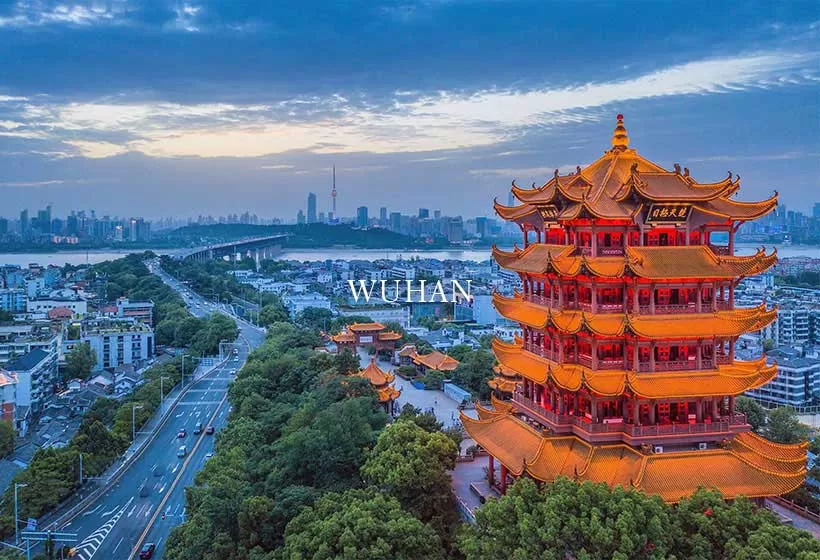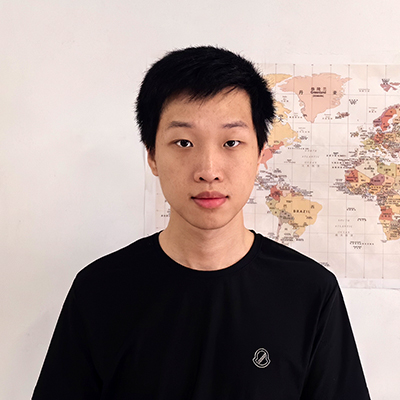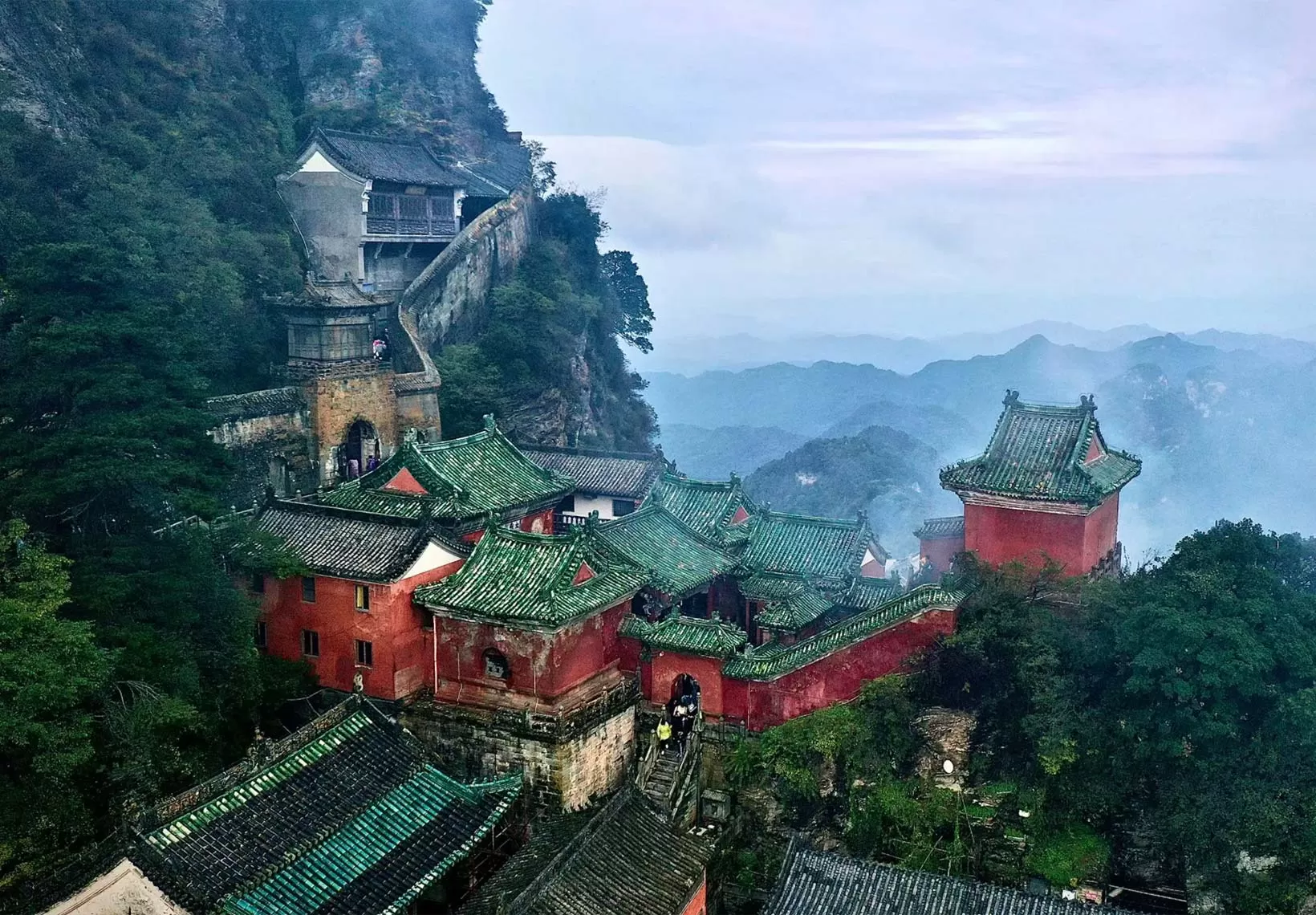Short Introduction to Hubei Local Culture
Hubei Province, abbreviated as "E" and also known as "Chu" or "Jing-Chu", has Wuhan as its capital. Located in central China, it borders Anhui to the east, Chongqing to the west, Shaanxi to the northwest, Jiangxi and Hunan to the south, and Henan to the north.
Hubei is the birthplace of Jing-Chu culture and was once the political, economic, and cultural heart of the ancient state of Chu. It is also the homeland of Yan Emperor, a legendary ancestor of the Chinese nation. With deep roots and distinctive features, Chu culture has had a profound influence. Hubei's religious culture is well developed, exemplified by Wudang Mountain's nine palaces and nine temples, a treasure trove of Daoist heritage. The legacy of the Three Kingdoms is another Hubei highlight, with sites such as Jingzhou Ancient City, Chibi, Dangyang, and Longzhong showcasing Hubei's rich Three Kingdoms culture.
Brief History
As early as 700,000–800,000 years ago, humans were already thriving and multiplying in what is now Hubei. During the Xia and Shang dynasties, the region came under central rule. By the Western Zhou, many small states emerged within here. In the Spring and Autumn and Warring States periods, these were gradually unified under Chu, making Hubei the cradle of Chu culture. Its east was largely marshland, known as the famous "Yunmeng Marsh".
At the end of the Warring States, Qin general Bai Qi captured the Chu capital; poet Qu Yuan drowned himself in the Miluo River to sacrifice his life for his country. After Qin unified China, Hubei became a key thoroughfare, leading to population growth. "Chu" was renamed "Jing", hence Hubei later called as Jingzhou (Jing Region) or Jing-Chu.
In the Han Dynasty, Hubei was set Jiangxia and Nan commanderies, both under Jingzhou, one of the empire's 13 provinces. During the Western Han, Wang Zhaojun, born in Yichang, Hubei, traveled beyond the frontier to marry a Xiongnu leader, strengthening Han-Xiongnu relations and laying the groundwork for a unified China. During the Three Kingdoms, Jingzhou was fiercely contested among Wei, Shu, and Wu. At the Battle of Red Cliffs, the Sun-Liu allied forces defeat Cao Cao, establishing a situation of tripartite confrontation.
In Sui and Tang times, Jiangxia was once renamed Ezhou (E Prefecture), source of Hubei's abbreviation "E". In the Northern Song, war in the north caused people to migrate south, and Hubei gradually prospered as a grain hub. During the Southern Song, Yue Fei stationed troops in Wuhan for seven years, sharpening his forces in preparation to recover lost territories.
Under the Yuan, Wuchang became a provincial seat, making Wuhan for the first time the seat of a provincial-level administrative unit. In the Ming, grand Taoist temples complex rose on Wudang Mountain. Later, after the Han River changed its course, Hankou formed on the north bank of the new river, and grew into one of China's four great towns.
In the Qing Dynasty, Hubei Province was formally named, a name that continues to this day. During the Self-Strengthening Movement, Zhang Zhidong established many modern enterprises in Hubei, making it a major industrial center. In 1911, the Wuchang Uprising broke out in Hubei, which ignited the entire nation and launched the Xinhai Revolution.
Since the founding of the PRC, Hubei has developed steadily. From its founding to the present, Hubei has weathered numerous natural disasters and hardships, yet continues to stand strong.
Jing-Chu Culture
Jingchu culture emerged in the Jianghan Plain from the Zhou to the Spring and Autumn and Warring States periods. It inherited many traits of Shang and Zhou civilization, with a profound and enduring legacy. Hubei, as its main birthplace, is still proudly called the "Land of Jingchu" by locals today.
"Jingchu" originally referred to a type of shrub common in the mountains and forests of Jianghan River in the south, used as firewood by ancient people. When Xiong Yi, the ancestor of the Chu rulers, led his people to settle and cultivate the rugged Jing Mountains, decades of hard struggle turned Chu into a dominant power in the region, launching a magnificent history and rich culture.
Chu's rise was both a story of cultural fusion and relentless self-strengthening. From the Spring and Autumn period, Chu expanded rapidly, especially under King Zhuang, annexing many small states and becoming a major southern power. Over its 800-year history, Chu created dazzling achievements: unique bronze casting, exquisite embroidery, graceful dances, profound philosophy, bold prose, and brilliant poetry—most notably, the Chuci.
Chuci. is hailed as the fountainhead of Chinese romantic literature. Written in local dialects, it vividly depicted Chu's landscapes, people, and customs, with passionate emotion and wild imagination, directly influencing the later Han fu. The loyal, patriotic Qu Yuan became a timeless model of Chinese intellectuals.
In China's long history, the Jingchu culture, with its distinctive spirit, nourished future generations. It complemented Central Plains culture: where the latter prized ritual, order, and restraint, Chu culture celebrated vitality and romance, with a soul roaming heaven and earth. Its openness absorbed northern and southern influences, enriching itself and laying foundations for its lasting legacy.
Ethnic Minority
Hubei is home to more than 3 million ethnic minorities, with the Tujia and Miao making up the largest proportions. But if you look closer, you'll also find the presence of Hui, Dong, Manchu, Mongolian, Yi, Zhuang and other ethnic groups. Some settled here due to historical migrations, while others remained through cultural integration, together weaving a rich and diverse tapestry of ethnic life in Hubei.
Tujia: The Tujia people is one of the major ethnic minorities in Hubei Province. Tujia culture is rich and diverse, with numerous forms of artistic expression marked by distinct styles. During collective labor, the Tujia created a form of singing accompanied by gongs and drums. The Baishou Dance, an ancient practiced Tujia folk dance, features lively rhythms and simple, unpretentious movements.
Miao: The Miao people is another one of the major ethnic minorities in Hubei. Renowned for their love of music and dance, the Miao's songs are bold, spirited, and resonate through the mountain valleys. The Miao have no written script of their own, and much of their history and culture has been preserved through intricate Miao embroidery. Their clothing is vibrant and colorful, with elaborate patterns that reflect strong ethnic characteristics.
Hui: Hubei is home to approximately 70,000 Hui people, who mainly reside in Wuhan, Jingzhou, and Xiangyang. In Wuhan, the Qiyimen Mosque, and in Jingzhou, Qingzhen Street, stand as symbols of the Hui community's faith and daily life. During Eid al-Fitr, the enticing aromas of beef guokui and youxiang cakes drifting through the streets become a distinctive sight in these cities.
Dong: Deep in the mountains live several thousand Dong people. Renowned for their skill in building wind-and-rain bridges and stilted houses using Chinese fir, they are also famous for their multi-part folk songs, the "Kam Grand Choirs".
Special Festivals
Wudang Mountain Temple Fair
Wudang Mountain Temple Fair began at the end of the Eastern Han dynasty, flourished during the Song, and reached its peak in the Ming and Qing dynasties. The fair is held twice a year, with the most grand celebrations taking place on the third day of the third lunar month and the ninth day of the ninth lunar month. Main activities include pilgrimages to offer incense, Taoist rituals and ceremonies, as well as various folk art performances. During the fair, people can enjoy spring outings, climb the mountain, admire lantern displays and scenic views, watch Wudang martial arts competitions, and enjoy fireworks shows.
East Lake Cherry Blossom Festival
East Lake Moshan Cherry Blossom Garden in Wuhan covers over 300 mu and is planted with more than 10,000 cherry trees of 56 varieties, making it one of the world's three major cherry blossom capitals. The peak blooming period lasts from mid-March to early April, attracting visitors from all over the country each year. The East Lake Cherry Blossom Garden also hosts the Cherry Blossom Festival and special nighttime blossom-viewing events annually.
Chuantian Festival
Chuantian Festival is a traditional celebration unique to Xiangyang in Hubei, takeing place on the twenty-first day of the first lunar month along the section of the Han River. The festival centers around the custom of collecting and wearing chuantian stones, pierced, milky-white pebbles unique to the Han River, to express wishes for love and happiness. Women thread these stones with colorful silk to wear as charms for blessings.
Guandi Temple Fair
Every year in the first lunar month and on the 13th day of the fifth lunar month, the Guan Di Temple holds a grand temple fair. During this time, Jingzhou people celebrate with dragon dances, lotus boat performances, horseback archery, suona playing, and sedan-chair parades, filling the temple and its surroundings with lively festivities. The people of Jingzhou have revered Guan Yu for over thousands of years, an unchanging tradition. Many hotels, shops, and homes in Jingzhou like to enshrine statues of Guan Gong in their main halls, with some even paying respects to him daily.
Diet Style
Hubei cuisine, also known as Chu cuisine or E cuisine, is one of China's traditional regional culinary styles. It is characterized by its emphasis on aquatic ingredients and fish dishes, with velvety sauces, and flavors that are savory and slightly spicy. Hubei cuisine values maintaining the original color and taste of ingredients, features a diverse array of dishes and elaborate banquets, and is renowned for embodying seven culinary qualities: fresh, tender, soft, smooth and refreshing, forming a distinct culinary system.
Hubei Province lies in the middle reaches of the Yangtze River, crisscrossed by rivers and dotted with lakes. It is one of the provinces with the highest concentration of freshwater lakes in China, earning it the name "Province of a Thousand Lakes". Located in the subtropical zone with a climate highly suitable for agriculture, Hubei is famed as a land of fish and rice. Its grain output, especially rice, holds an important position nationally, and it is also extraordinarily rich in freshwater products.
The Jingnan style excels at braising and stewing wild game and small freshwater produce, combining poultry, fish, eggs, dairy, vegetables, fruits, grains, and beans. It uses light velveting, has a pure and delicate flavor, and emphasizes the original taste, elegant and refreshing. The Xiangyang style centers on poultry, complemented by fresh fish, infusing flavor thoroughly, seasoning with minimal broth, as well as tender, flaky, and aromatic. The Ezhou style is known for processing grains, beans, vegetables, and fruits, notable for generous oil usage, skilled heat control, bolder flavors, with a strong rustic character. The Hanmian style is famed for braising large freshwater fish and slow-simmered soups, adept at blending poultry, livestock, and seafood into flavorful creations.
Religious Belief
Hubei is one of the provinces in China where religious affairs are particularly significant. The province is home to all five major religions—Buddhism, Taoism, Islam, Catholicism, and Protestantism. The Zen Buddhist culture of Huangmei in eastern Hubei and the Taoist culture of Wudang in northwestern Hubei are especially long-standing and profound.
Buddhism
At the end of the Eastern Han dynasty, wars in the north caused monks and laypeople to flee south, initiating the southward spread of Buddhism. As a result, Wuchang (now Ezhou) in Hubei became the first stop for Buddhism as it spread from Luoyang to the south. During the Sui and Tang dynasties, Buddhism flourished, and eight major schools emerged. Many of their influential patriarchs visited or preached in Jing-Chu, establishing numerous Chan Buddhist centers. In modern times, the founding of Wuchang Buddhist Studies Institute set a precedent for Buddhist education in China, and its influence continues to this day.
Taoism
From the Spring and Autumn period to the end of the Han dynasty, Mount Wudang had already become a major center for religious activities. Zhang Jiao's Taiping Dao spread into the Jingchu area, making places like Xiangyang and Jiangling key Taoist centers. During the Yuan and Ming dynasties, the status of Wudang Taoism continued to rise, reaching its peak of prosperity and encompassing nearly all Taoist sects. Emperor Yongle of the Ming dynasty carried out a large-scale reconstruction of Mount Wudang, turning it into the largest Taoist architectural complex in China.
Cultural Heritage
Hubei sits at the cultural crossroads of the Central Plains, serving as both a buffer zone and the cradle of Chu culture. It has endowed Hubei with a dazzling array of cultural heritage, rich, diverse, and enchanting, making it a crown jewel of Chinese civilization.
The ancient architectural complex of Wudang Mountain, some are grand and majestic, others delicate and exquisite, some nestled in secluded mountain valleys, and others perched on precipitous cliffs, exemplifies the pinnacle of traditional Chinese architecture. Shennongjia is a picturesque paradise, known as the natural water tower that sustains life across Central China. The Mingxian Mausoleum stands as a brilliant gem among China's imperial tombs, embodying profound feng shui wisdom with its unparalleled design of "one mausoleum, two burial mounds". The Tusi City ruins preserve the craftsmanship and artistic spirit of Ba-Chu architecture, offering a glimpse into the legendary lives of Tujia chieftains.
Hubei's intangible cultural heritage is equally profound, reflecting the daily life and traditions of its people. The legend of Qu Yuan is moving and romantic, and Li Sao reveals his spirit and has been recited for millennia. Huangmei Opera is rich, flowing, lyrical, and lively, its classic piece The Heavenly Match resonates gracefully, appealing to both refined and popular tastes. Han embroidery dazzles with its vivid colors and intricate patterns, stitching the customs and landscapes of Jingchu into every thread. Wudang martial arts master the principle of using softness to overcome hardness, harmoniously blending stillness and motion, each movement embodying the essence of Daoist philosophy.
GREAT FAMILY CHINA TOUR
JULY 2024 We wanted to thank Grace at China Culture tour for organizing a great tour of China. We enjoyed our Beijing - Xian-Chengdu -Guilin -Yangshuo - Shanghai trip. Our local guides Bruce in Beijing, Susan in Xian, Jane in Chengdu, Mike in Guilin and Mary in Shanghai took care of us…read more details »
Teng Han L from SINGAPORE
Ready to Create a Unique Dream Travel?


